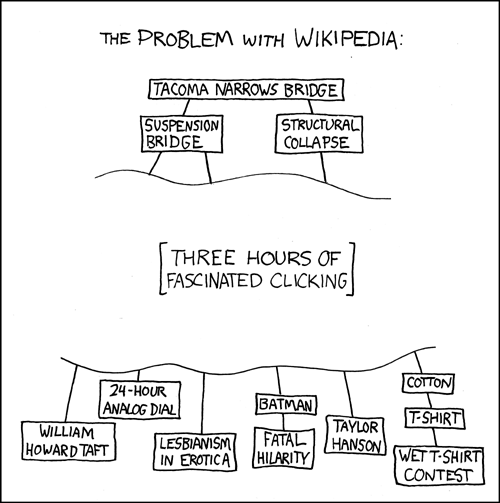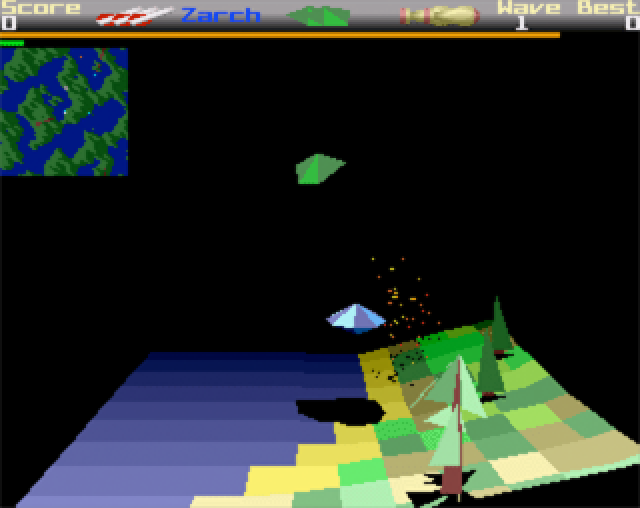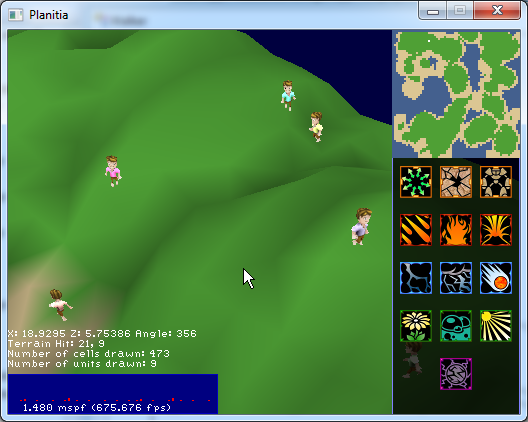So I’ve been thinking about my projects lately.
As much as I love the concept of Planitia, it seems like nobody is going to want to play it. It wasn’t going to have a huge single-player component and the odds that it’ll become a breakout multiplayer hit are…slim.
So I’ve been focusing on Inaria. My initial goal was to simply get it on Steam, and to that end I did things like revamp the layout so that it works better on 16:9 monitors. I also upgraded the font to an excellent one from Chevy Ray’s Pixel Font pack:
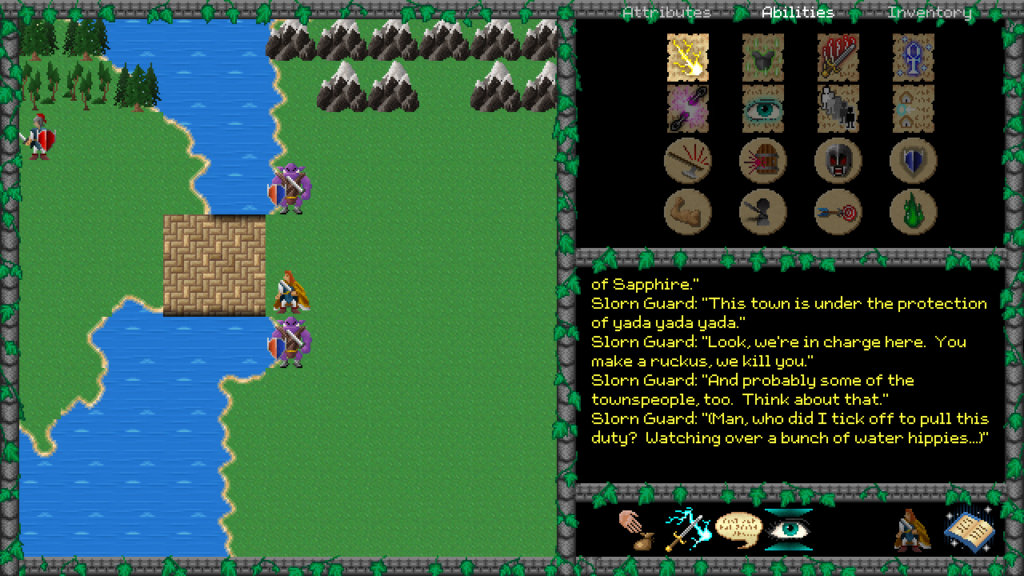
I think that looks rather spiffing. But the more I work with the game, the less I want to put it on Steam. It’s so primitive, even with the upgraded graphics. The mechanics are uninspired and there’s only one character. I tried to make Ultima III and ended up making Dragon Quest 1. Just about every element of the game needs work; the maps especially look (to me) terrible, since I Cannot Art.
One of the big things I wanted to do was expand the party to at least four members and add party-based combat. Again, my original goal was to make the game more like Ultima III (or maybe IV. Or V. One of those.)
But the thought of working out the mechanics didn’t appeal to me, so I wasn’t really motivated to do it. And now I think I’ve figured out why.
And now it’s time to go off on a HUGE tangent. Sorry!
I’ve done extensive research into tactical turn-based combat systems over the years and I feel that they fall into three general categories, which I’m going to name based on the original games that created them (to my knowledge).
The first is the Dungeons & Dragons system. As any schoolkid knows, D&D was adapted from a miniatures game called Chainmail, which itself was adapted from older board wargames. In the original board wargames, a single unit actually represented a large number of people – a column of tanks or a detachment of soldiers, for example. The scale of the maps was much larger as well. In general, the number of options allowed was limited – you moved and/or attacked and that was it. This limitation propagated through to Dungeons & Dragons, where every turn you could move one space OR make take one action (like attack, use an item or cast a spell) – and that was it. This makes combat feel very choppy and if the two parties are far away from each other, it can take several turns before they even come into combat range. Still, this combat system was highly influential, used in dozens of early computer RPGs, including the Ultima series, the Bard’s Tale series, the Wizardy series, etc.
The second is the Snapshot system, designed by Marc Miller. This uses an Action Point system, where characters have a number of points based on their stats, and can perform actions on their turn by spending those points. This system allows great flexibility while having somewhat unrealistic outcomes; a character with a high number of action points can step around a corner, make multiple attacks, and then step back around the corner so that enemies can’t retaliate. This system was later adapted into many tactical combat games on computers, including X-COM and Jagged Alliance.
The third is the Fantasy Trip system, designed by Steve Jackson. This system gives characters a Move score, denoting the number of spaces the character can move in a turn. However, a character can’t make an attack if they move more than half of their Move score in a single turn. A character can only make one attack per turn and if they make that attack, they can’t move afterwards. This is much more realistic but also much more limiting, and requires more rules to cover some edge cases (what’s half my Move if my Move is 7? Is it 3 or 4?). A lot of tactical games use a revised version of this system where you can move up to your full Move, then do one action. Final Fantasy Tactics uses this system.
Now, you may know that I read the CRPG Addict’s Blog extensively. (I’m getting to my point, I swear.) He’s played a bunch of games I’d heard of and read the manuals for, but didn’t get a chance to play myself since I didn’t have an Apple II or Commodore 64 growing up. In particular, SSI‘s RPGs intrigued me, especially the tactical ones. Over the course of three years, SSI published four RPGs with tactical combat created by two different teams of programmer/designers: Wizard’s Crown and its sequel The Eternal Dagger, and Shard of Spring and its sequel, Demon’s Winter.
Now here’s the amazing thing: the two different lines of games use the two different combat systems! Wizard’s Crown and Eternal Dagger use the modified Fantasy Trip system, where characters can move up to six spaces and then take an action. Shard of Spring and Demon’s Winter use an AP system, allowing characters to move freely and attack multiple times per turn, realism be damned.
And you know what? I don’t like the Dungeons & Dragons or Fantasy Trip systems. While I love Ultima, it’s combat has always been its weakest element and I believe this is why. It doesn’t help that most combats take place on a single screen, in a cramped 11×11 arena.
I like the Snapshot system. Actually, I LOVE the Snapshot system in just about every incarnation I’ve discovered it. I love X-COM (and XCOM even though the system isn’t quite the same) and I love Jagged Alliance 2. (I actually started playing the game again recently after seeing a surprisingly hopeful trailer for Jagged Alliance 3).
Which leads me back to Demon’s Winter. After making this discovery and reading the CPRG Addict’s blog posts about the game I decided I wanted to play it myself. While the game is no longer downloadable, it can still be played on Archive.org’s web DOS emulator. I was amazed how easily I was able to get into the game even without reading the manual. You use the arrow keys to move your characters around and press the key for the action you wish to take, with a complete list on the right side of the screen. Arenas are also much larger than the screen, allowing for truly huge combats on extremely varied terrain. Compared to other early RPGs, it’s a model of playability and clarity, although it’s not very pretty.
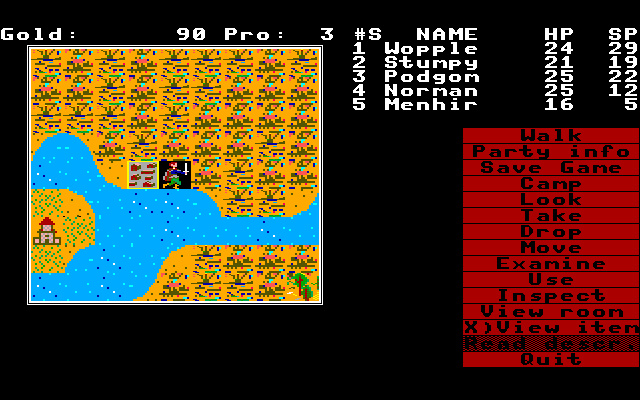
“So what does this have to do with Inaria?!” I hear you shriek. Well, it should be obvious. I’m going to add tactical, party-based combat to it and I’m going to use the Snapshot system to do it. I don’t know of any other indie games that are using a system like this so hopefully not only will I be using the system I want, I’ll be making the game more distinctive as well.
Of course, it’s not all peaches and gravy. AP combat systems can have serious flaws, which I’ll get into in my next blog post.

